Looking to inject some life and make an impact with your internal communications campaigns?
Our two-part comms hacks blog continues…
If you missed part I, check out the first 15 handy hacks here. In this edition, we explore a broad selection of insider tips and tricks, ranging from the value of storytelling and using your mission to the power of analytics, crowdsourcing, and more.
The Unified Frontline – An intranet guide to improving frontline worker performance
1. Print isn’t dead
It may get bad press(!) but the fail-safe printout isn’t dead yet. Particularly if you’re doing a 365-degree campaign and want to ensure maximum visibility, consider supplementing your digital communications with posters, postcards, letters or factsheets. Leave them in high-traffic areas of the office or areas where staff congregate.
The more touchpoints you have with your audience, the more likely the message is to stick.
2. Name your comms channels
It may sound childish, but bear with me here. Personifying your communication platform and giving it an identity is shown to improve engagement with it. It makes it easier to promote and reference, and if selected correctly, can support your internal branding strategy by serving as an icon or representation of your culture.
Naming in action: Children’s hospice charity, Acorns, gave their intranet a brand and identity under the name “Intranut”. The platform used colors, fonts and imagery that reflected the company brand and culture – keeping the organization’s mission “front of mind” at all times.
Staff seeking information speak of it colloquially; “Have you checked Intranut?”, rather than “the intranet”. The overall approach makes their communication point more personable, inclusive and engaging for all staff.
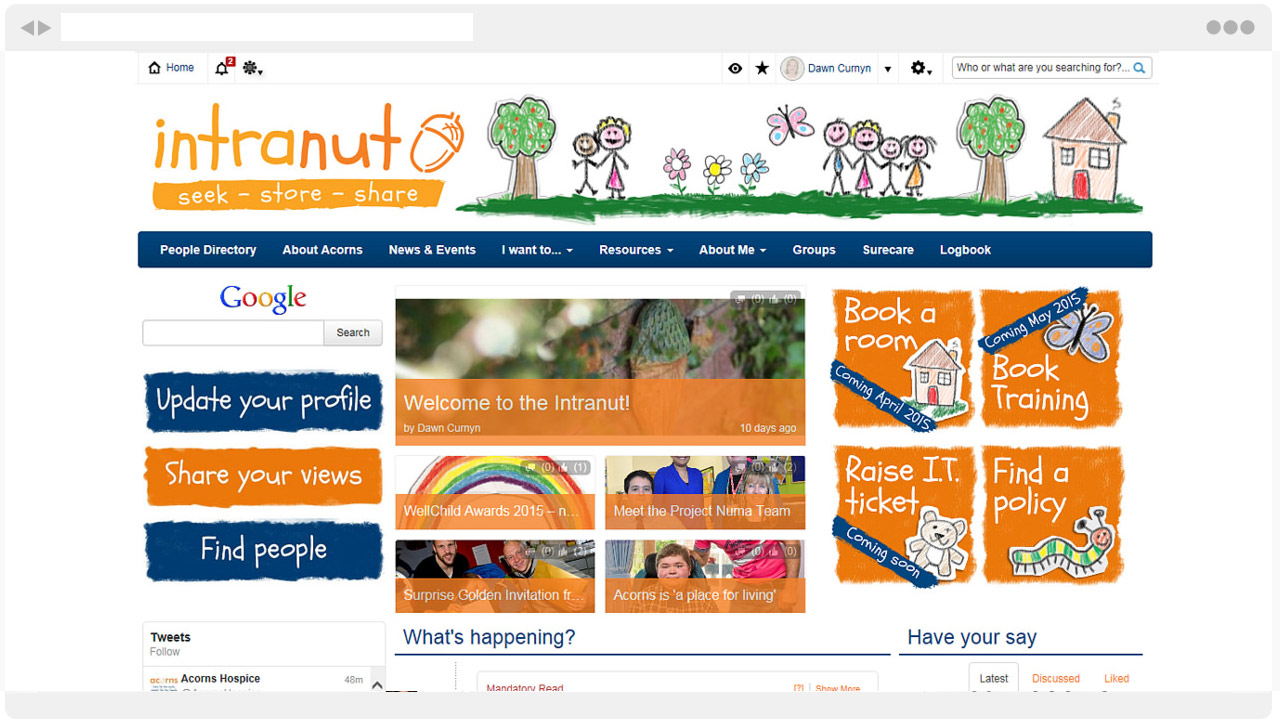
3. Give your internal brand to your employees
Struggling to get your internal brand to take off? An internal brand is now a key part of your employer value proposition and increasingly, may give your organization a competitive edge. Too often, however, the internal brand is owned by internal comms – and ignored by everyone else.
So, make it something your staff own, influence and contribute towards. Ask for their ideas and input. Run polls or surveys to understand how your staff feel about their brand or set up purpose-made focus groups with representatives from across the business. If they’ve played a role in shaping and defining it, your staff are more likely to believe in it and have pride in it: and, ultimately, engage with it.
4. Create and share brand internal collateral
It’s common to have standardized company brand templates for everything and anything going external. So why not do the same for internal communications?
You’ve spent time and effort defining and building your internal brand, so make it accessible. Create templates, name and promote the fonts and colours, put brand images and collateral into a central, accessible folder for all to use. Encourage everyone involved in communicating internally to integrate branding with their message. Don’t be the bottleneck: internal communication should be a collaborative process, with everyone involved.
The Unified Frontline – An intranet guide to improving frontline worker performance
5. Use your mission, vision, values
Don’t let your company mission and values become corporate speak that lose relevance for employees. Research shows companies with a higher sense of purpose outperform others by as much as 400%: so, bring that sense of purpose into the day-to-day communication efforts of your business.
Blogging about a recent achievement? Identify how that has contributed towards your vision or the values demonstrated by those who made it happen. Got a new product or service line launching? Align it with the larger mission of your business.
Mission and values in action: At Interact, we operate a peer-to-peer reward system on our intranet; colleagues can recognize and reward one another. When they include a #value in the reason for that reward, the individual automatically enters a prize draw to win a quarterly prize. Employees stay #passionate about their values – because they’re identifying, demonstrating and living them daily.
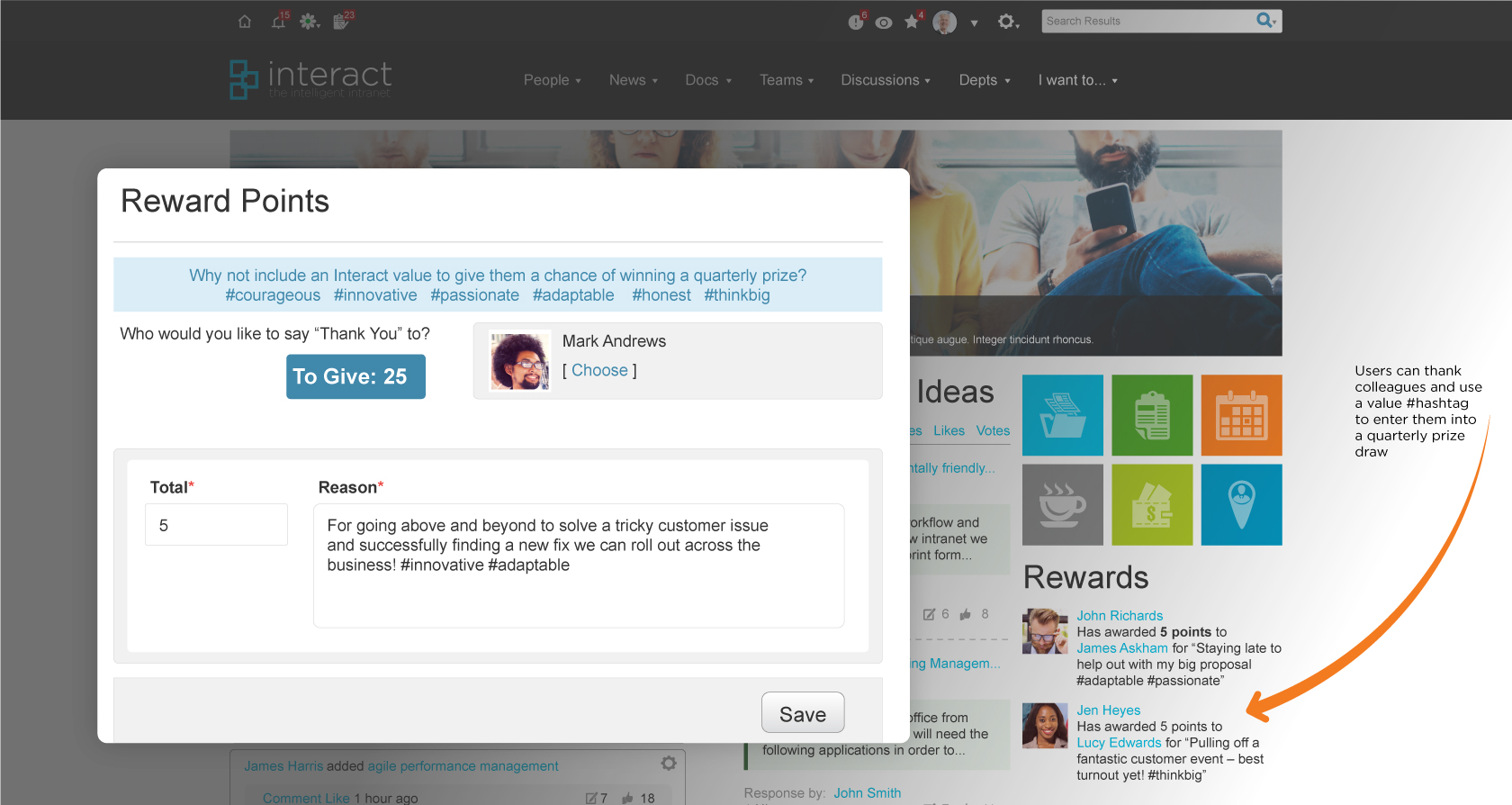
6. Create a #hashtag
If you use an internal communications platform such as an intranet or an ESN, consider creating dedicated #hashtags for specific campaigns.
The beauty of this social media trick is that all content around that subject perhaps instantly searchable and identifiable. It creates a ‘trend’ that encourages engagement and discussion, and can translate easily into external channels if required.
Adobe capitalized on this functionality as part of their employer branding strategy, encouraging employees to use the #AdobeLife hashtag when promoting the culture of the business. The hashtag carries over onto the public social media channels and across individual accounts, increasing visibility of the campaign.
7. Branch out: use other departments/resources
Stuck for fresh content? Looking to make an impact with your next campaign? Within every business, there will be skill sets and resources we aren’t necessarily aware of – or utilize effectively, even if we are.
Perhaps you want to mix up your content type, but don’t have the skillset or resource yourself. Put the feelers out or, if you can, look to your People Directory and see what hobbies and interests reside within your business. Perhaps you have a budding photographer in your midst, or a front-end developer willing to give you some coding and design time. When you step out your silo, the possibilities can ignite your comms campaigns.
8. Create a crisis comms plan
Don’t be caught out. Crisis communication is one of the most intensive responsibilities of any internal communications team: it’s deserving of some extra time and attention to reduce risk and ensure smooth delivery.
The Unified Frontline – An intranet guide to improving frontline worker performance
Define what constitutes a crisis for your business and define the cascade and channels to get the message out. Ensure those responsible know their roles and your business is protected, should the worst happen. Check out our article on CMSWire for more insights on creating a Crisis Comms Plan.
9. Ask for feedback
How do you know if what you’re doing is working? You ask, of course.
This should be a given, not a hack; but too often, we fail to ask or appreciate the value of feedback. It’s powerful. It can (and should!) shape all your future campaigns. So, open the channels and put yourself on the line. Use your intranet forums, bring together focus groups, hold an open discussion.
What do people want to see more of? What has worked well? If you have change in the pipeline or a campaign you want to gauge before it goes live, test the water and ask for the input of the people who matter: your audience.
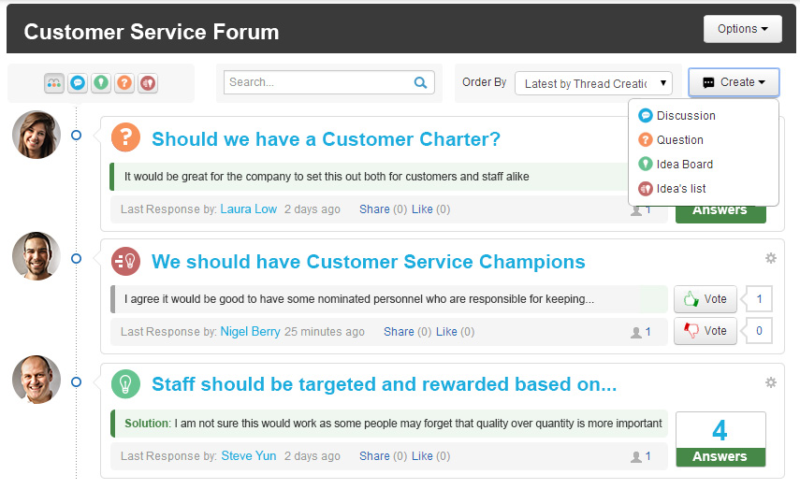
10. Metrics and analysis – find what works
If the people won’t talk, the numbers will.
Use the intelligence behind your communications platform to determine success of campaigns, exploring metrics including views, likes, comments, shares. An intelligent intranet, such as Interact, can offer insights into aspects such as active users, contributions and content created, as well as issuing warnings to be actioned if required.
11. Combine personal and professional
All work and no play is no recipe for success in internal communications. Mix it up and don’t be afraid to go “off piste” with your content to encourage engagement and contributions. For this, it’s best to lead by example – once employees know what is acceptable on your internal channels, they’re more likely to follow suit.
Encourage users to blog about elements of their lives outside of work: charities or causes they care about, for example, or even sharing their recommendations for great places to eat or visit. One of the most popular (and most engaged with) forum discussion threads on our own intranet is for TV show recommendations: it gets people talking and connecting, building engagement and the internal culture.
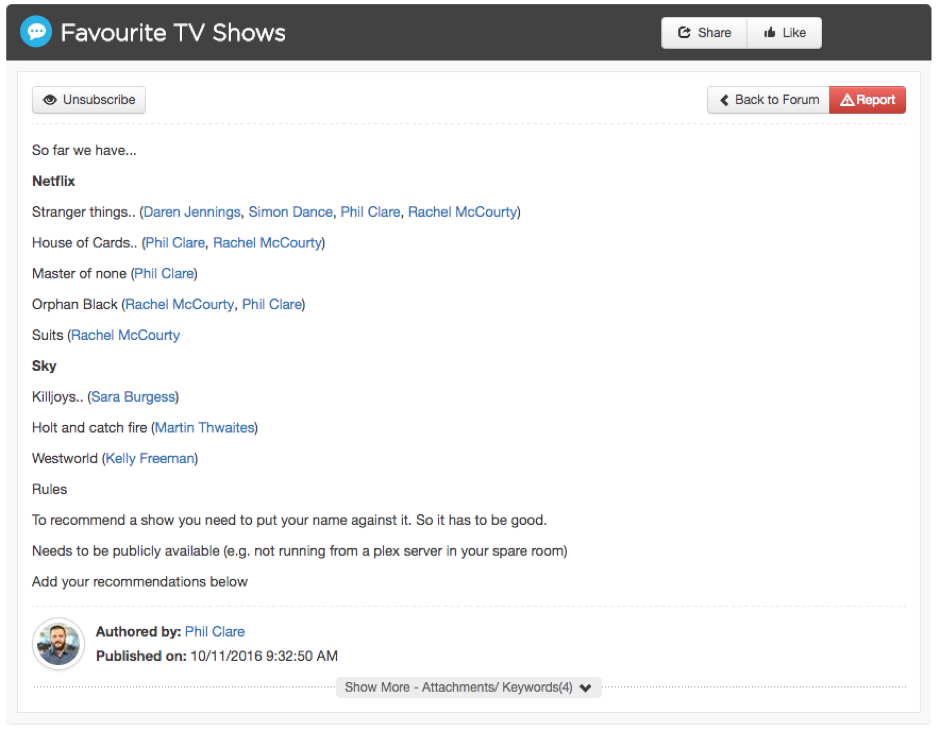
12. Use storytelling
Storytelling has been a powerful communication tool for centuries: however, when it comes to telling stories for internal purposes, many continue to shy away. There’s this misconception that keeping up a professional facade means distancing ourselves, using corporate-speak at all times. It’s time to bring storytelling in-house.
Writing for AllThingsIC, coach Vera Woodhead explains the power of a story to bring hard data, facts and information to life, creating a shared sense of identity. Leaders and communicators who utilize storytelling, Vera argues, can “inspire, encourage and energise […] An emotional engagement results in greater buy-in. You cannot achieve that with a mere Powerpoint.”.
13. Ghostwrite on behalf of senior management
If you’re struggling to get content from board level, consider using comms resource to ghostwrite content on behalf of your CEO or senior management. From CEO blogs to Q&A forums, there are infinite ways to keep employees up to speed on company policies, decision making, and strategy. There’s no reason these days not to be fully transparent as an organization, and your employees will thank you for doing so.
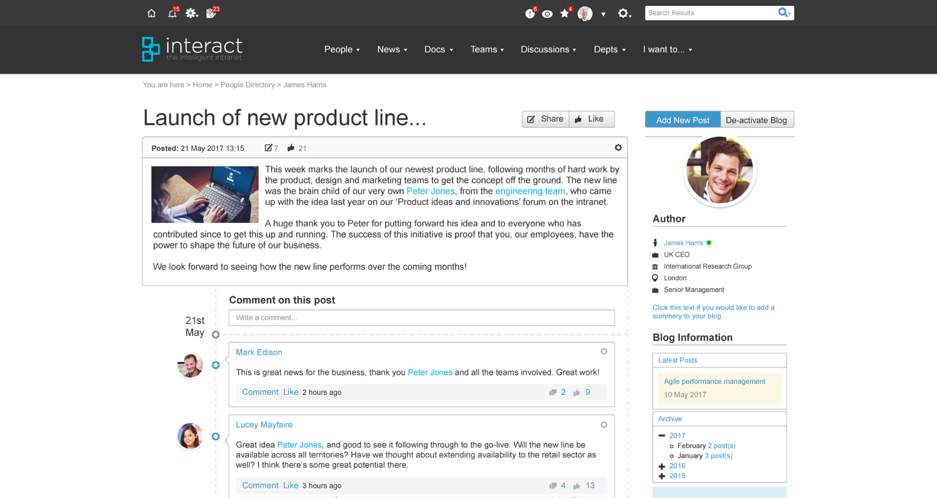
(With access to the accounts of senior management, internal communicators can ghostwrite on their behalf to give gravitas to particular announcements and communications)
14. Request user contributions / delegate
Internal communications should be a collaborative process, drawing on different voices, departments, perspectives. With management buy-in, make the creation and distribution of comms internally a democratic process and request periodic contributions from different areas of the business.
The different voice keeps campaigns fresh and engaging, while the opportunity or seeing into different departments supports transparency and understanding amongst your staff.
15. Say thank you
Last but certainly not least, make a recognition and reward process part of your internal communications strategy.
If your communications are entirely focused on issuing policy, providing updates or instruction, you’ll quickly lose your audience. Making a point of injecting some appreciation blogs and highlighting the good work done by individuals, departments or the business overall. By promoting positive efforts as well as the mundane, you’ll rank up engagement.
Got an internal comms hack or top tip we’ve missed? Why not leave us a comment below with your suggestions?





